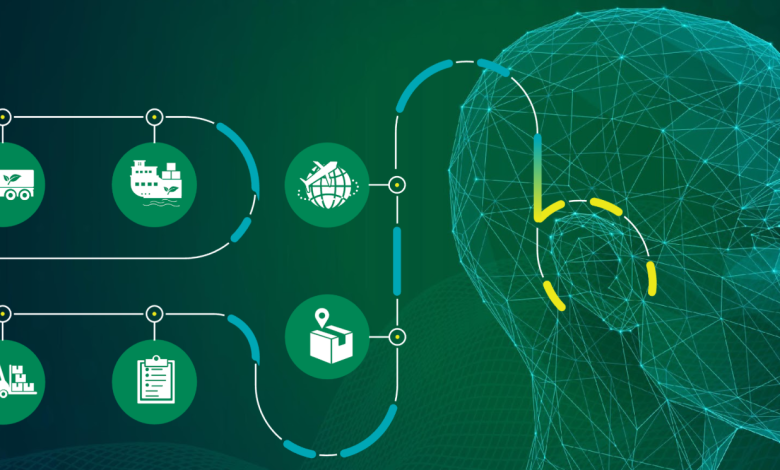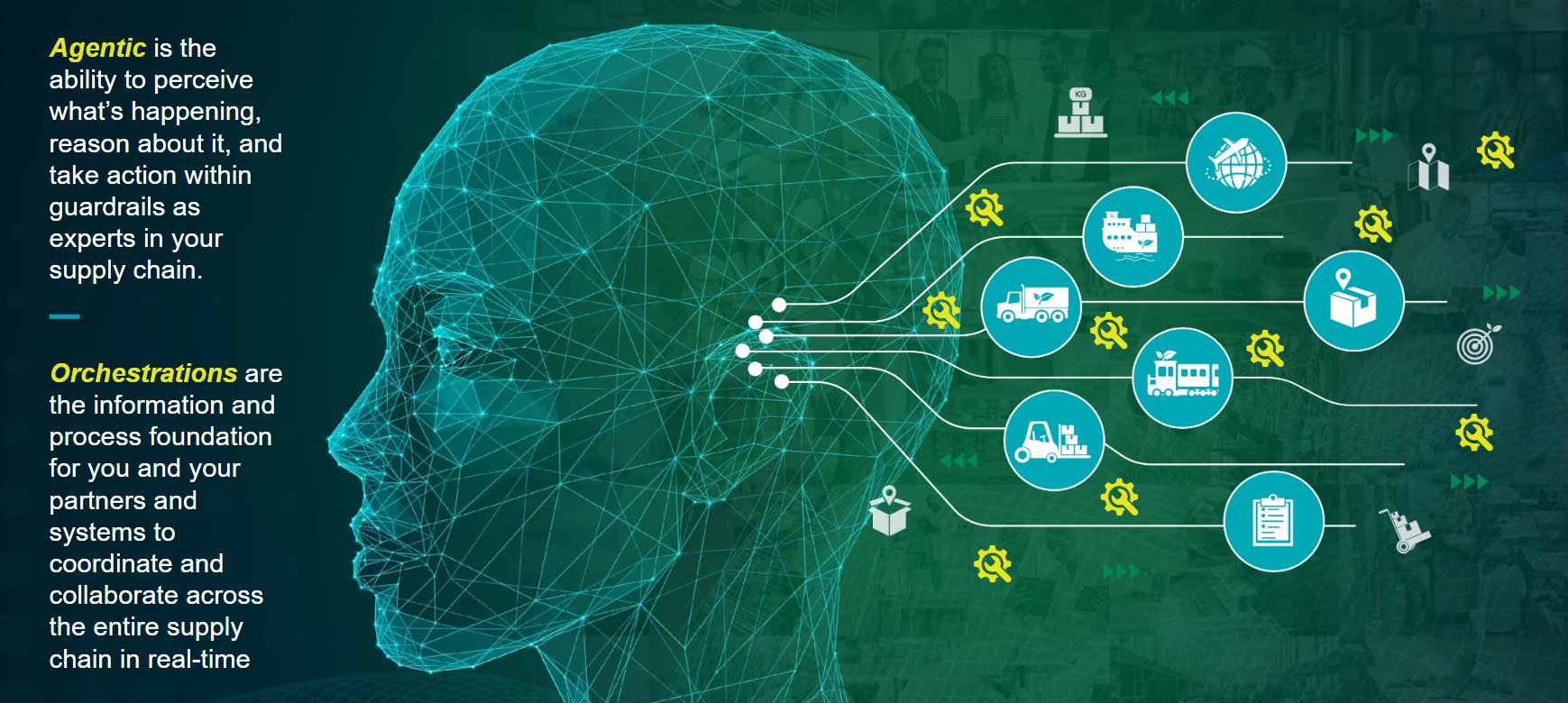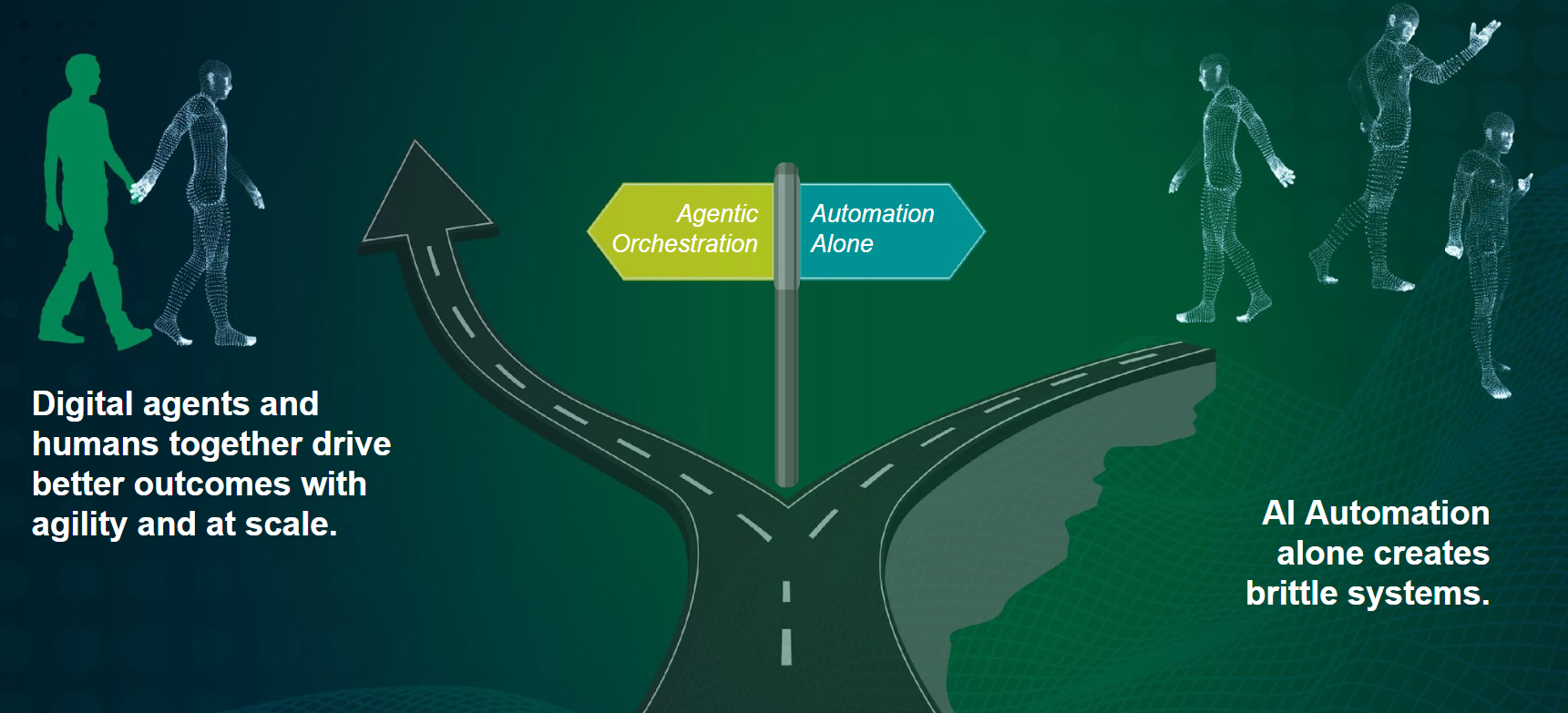
For decades, automation has been the go-to solution for addressing operational inefficiencies. It streamlined processes, reduced human error, and delivered repeatable results. However, today’s enterprise ecosystems are far more complex than the linear workflows for which automation was designed. Global supply networks now span thousands of partners, diverse regulations, and an expanding universe of interconnected systems, all of which are moving faster than most IT architectures can adapt.
The result is that traditional automation, while efficient in isolation, often creates rigidity at scale. When disruptions occur, whether geopolitical, environmental, or digital, rigid systems frequently fail to reason, adapt, and recover in a timely manner. The modern CIO faces a strategic inflection point: how to design systems that don’t just automate tasks, but orchestrate intelligence and reasoning across the enterprise.
From Intelligent Automation to Agentic Orchestration
The next evolution isn’t more automation, it’s orchestration. Where automation executes rules, orchestration uses context, reasoning, and shared data to coordinate outcomes across teams, systems, and partners. The difference lies in intelligence.
“Agentic” orchestration introduces digital agents that perceive, reason, and act under human-defined objectives and constraints. These agents don’t replace people, they collaborate with them, surfacing insight, suggesting actions, and executing approved steps at machine speed.
This model represents a human-to-agent (H2A) operating system: people set direction and guardrails, while digital agents manage information flow, analyze trade-offs, and automate multi-step coordination that would otherwise consume weeks of manual effort.
CIOs Are at the Center of This Shift
Recent research from LogiPharma’s 2025 AI and Technology Report shows that data readiness, not model sophistication, is the single most significant determinant of AI success. Organizations with clean, connected, and contextualized data are exponentially more likely to achieve measurable outcomes from AI investments.
For CIOs, this means the architecture conversation must shift from Which model? to What data foundation? The path to orchestration intelligence begins with interoperability, ensuring that data shared across partners retains meaning, timeliness, and traceability.
When systems speak a common language, digital agents can finally understand the difference between a purchase order, a quality deviation, and a temperature excursion, and act accordingly. Without that foundation, “intelligence and reasoning” remain aspirational.
Designing for Trust, Safety, and Value
As CIOs explore the integration of agentic capabilities, governance must evolve in tandem with innovation. The goal is not to unleash autonomous decision-making, but to build trusted autonomous partners, systems that act with transparency, accountability, and alignment to enterprise objectives.
Principles for CIOs to consider:
- Human-to-Agent (H2A): Every agent should operate under defined human oversight, with clear escalation pathways in place.
- Least-privilege design: Agents must respect role-based access and existing data-sharing boundaries across partners.
- Auditability: Every action and decision trail must be transparent and retraceable, ensuring compliance with evolving AI governance standards.
- Outcome-driven metrics: Focus on agentic automation where outcomes are measurable, such as service levels, working capital, cycle times, and compliance performance.
These are not just IT safeguards; they’re strategic enablers of enterprise trust.
Opportunities for Agentic Transformation
Across industries, CIOs are exploring what becomes possible when orchestration intelligence and reasoning are embedded into enterprise operations. The following representative scenarios illustrate potential outcomes that digitally mature organizations could achieve, outcomes that align with where many enterprises are heading as they move from automation to orchestration.
- Supply Continuity During a Logistics Disruption
Imagine a regional logistics shutdown caused by flooding or port closures. In a digitally connected ecosystem, AI agents can detect early signals from carrier feeds and weather alerts, correlate these with in-transit data, and recommend alternative routes through nearby hubs, all before planners open their dashboards. With human approval, recovery actions could begin within minutes rather than days, maintaining delivery commitments and minimizing downstream impact. - Order Management in Pharmaceuticals
In complex pharmaceutical supply chains, orchestration agents could continuously reconcile purchase orders, shipments, and receipts across manufacturers, CMOs, 3PLs, and distributors. Instead of manual order matching, AI agents would learn from transaction patterns, detect mismatched quantities or missing confirmations, and flag discrepancies for review. Over time, data accuracy and partner synchronization would improve organically reducing order cycle time, preventing fulfillment delays, and ensuring life-saving medicines reach patients without interruption. - Real-Time Quality Escalation in Manufacturing
In regulated industries, AI agents could monitor electronic batch records and automatically initiate corrective-action workflows when deviations occur. Supporting documentation, task assignments, and manufacturing audit logs can be generated in real-time, creating a closed-loop process for compliance and quality assurance. Human oversight would remain central, but the administrative burden and lag between issue and resolution would shrink dramatically. - Cold Chain Integrity Optimization
In pharmaceutical distribution, orchestration intelligence could connect logistics management systems with IoT-enabled temperature sensors, carrier data feeds, and warehouse monitoring platforms. Agents could detect temperature excursions in real time, automatically reroute at-risk shipments, or adjust storage conditions to maintain product integrity. The value would not stem solely from predictive analytics, but from interoperable systems and timely, trusted data streams that ensure vaccines and biologics arrive safely, reducing waste and safeguarding patient outcomes.
Each example illustrates the same point: orchestration doesn’t replace people, it amplifies their capacity to act intelligently, quickly, and safely.
The Strategic Imperative
The CIO’s mandate is expanding from system reliability to enterprise transformation, and in an era of data abundance, connected intelligence becomes the differentiator. AI alone is not the breakthrough, it’s the orchestration of people, data, and digital agents that determines competitiveness.
Orchestration intelligence marks the transition from information systems that record what happened to ecosystems that reason about what should happen next. This is the foundation of the AI-ready enterprise, one that doesn’t merely automate processes, but orchestrates outcomes across its entire digital ecosystem.
The Leadership Opportunity
The next wave of transformation belongs to CIOs who can bridge architecture with intelligence, governance with agility, and technology with trust. This is not about building smarter systems, it’s about enabling smarter organizations.
The shift from automation to orchestration is not incremental; it’s foundational. And those who embrace it first will define how enterprises think, decide, and collaborate in the age of AI.





